In recent years, drones have become increasingly popular for both recreational and commercial use. These unmanned aerial vehicles offer a wide range of applications, from aerial photography and videography to package delivery and agricultural monitoring. However, as with any technology, there are risks involved in operating a drone. That’s where drone insurance comes in. In this article, we will explore what drone insurance is, the benefits it offers, the different types of coverage available, and how to find the right policy for your needs.
What is Drone Insurance?
Drone insurance is a specialized form of insurance that provides coverage for the risks associated with operating a drone. Just like car insurance protects you against accidents and damage to your vehicle, drone insurance protects you against accidents and damage caused by your drone. This includes liability coverage for bodily injury or property damage caused by your drone, as well as coverage for damage to the drone itself.
The Benefits of Drone Insurance
Many drone owners may wonder why they need insurance for their drones. After all, they may argue, drones are small and lightweight, so the risk of causing significant damage or injury is minimal. However, the reality is that accidents can happen, and the consequences can be severe. Here are a few reasons why drone insurance is essential:
- Liability Protection: If your drone were to accidentally collide with a person or property, you could be held liable for any injuries or damages. Drone insurance provides liability coverage to protect you financially in such situations.
- Damage Coverage: Drones are not cheap, and repairing or replacing one can be a significant expense. With drone insurance, you can have peace of mind knowing that you are covered for accidental damage to your drone.
- Legal Requirements: In some countries or jurisdictions, drone insurance is a legal requirement for commercial drone operators. By having the appropriate insurance coverage, you can comply with these regulations and avoid potential fines or penalties.
Types of Drone Insurance
Now that we understand the importance of drone insurance let’s explore the different types of coverage available:
- Liability Insurance: Liability insurance is the most basic and essential form of drone insurance. It provides coverage for bodily injury and property damage caused by your drone. For example, if your drone were to crash into someone’s car or injure a person, liability insurance would cover the resulting costs.
- Hull Insurance: Hull insurance, also known as physical damage coverage, provides coverage for damage to your drone itself. This includes damage from accidents, crashes, or other perils. Hull insurance can be particularly useful for commercial drone operators who rely on their drones for their business operations.
- Payload Coverage: Some drones are equipped with specialized equipment or payloads, such as cameras or sensors. Payload coverage provides protection for these additional components in the event of damage or loss. If you rely on your drone’s payload for professional purposes, payload coverage can be crucial in ensuring that you can continue your operations without significant interruptions.
Factors that Affect Drone Insurance Coverage
When applying for drone insurance, several factors can influence the coverage you receive and the premiums you pay. It’s essential to understand these factors so that you can make an informed decision when selecting a policy:
- Drone Usage: The way you use your drone can affect your insurance coverage. For example, if you primarily use your drone for recreational purposes, your coverage needs may be different than someone who uses their drone for commercial operations. Be sure to choose a policy that aligns with your specific use case.
- Drone Pilot Qualifications and Experience: Insurance providers may take into account the qualifications and experience of the drone pilot when determining coverage. If you are a licensed and experienced drone pilot, you may be eligible for lower premiums or additional coverage options.
- Additional Endorsements and Riders: Depending on your specific needs, you may want to consider additional endorsements or riders to customize your coverage. This could include options such as coverage for flying your drone in restricted airspace or coverage for transporting your drone via commercial airlines.
Finding the Right Drone Insurance Policy
Now that you understand the different types of coverage and factors that can affect your coverage, how do you go about finding the right drone insurance policy? Here are a few tips to help you navigate the process:
- Shop Around for the Best Coverage: Just like with any insurance policy, it’s essential to shop around and compare quotes from different providers. Look for a policy that offers the coverage you need at a price that fits your budget.
- Consider a Financial Organization like Bank of America: Many financial organizations, such as Bank of America, offer specialized insurance products, including drone insurance, to their customers. These organizations often have established relationships with trusted insurance providers and can help you find a policy that meets your needs.
Conclusion
Drone insurance is a vital tool for mitigating the risks and liabilities associated with operating a drone. Whether you are a recreational drone enthusiast or a commercial operator, having the right insurance coverage is crucial to protect yourself financially. By understanding the different types of coverage available, the factors that can affect your coverage, and how to find the right policy, you can ensure that you are adequately protected against any unforeseen accidents or incidents. So, before you take to the skies, make sure you have the right drone insurance in place.







